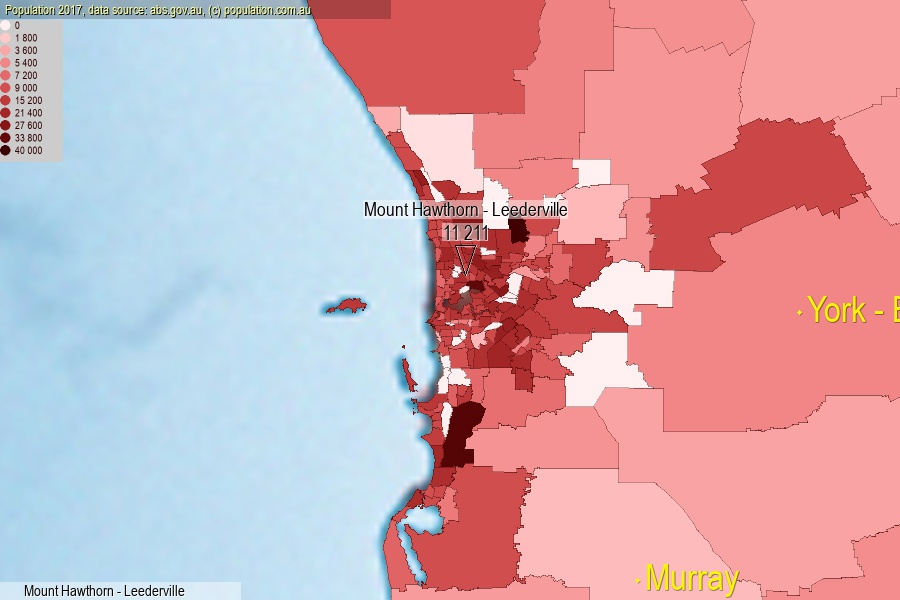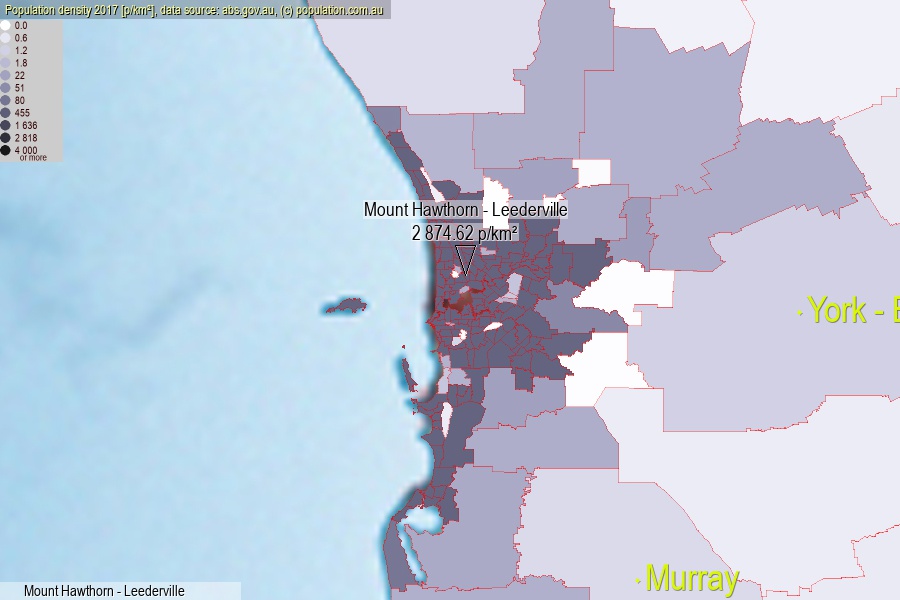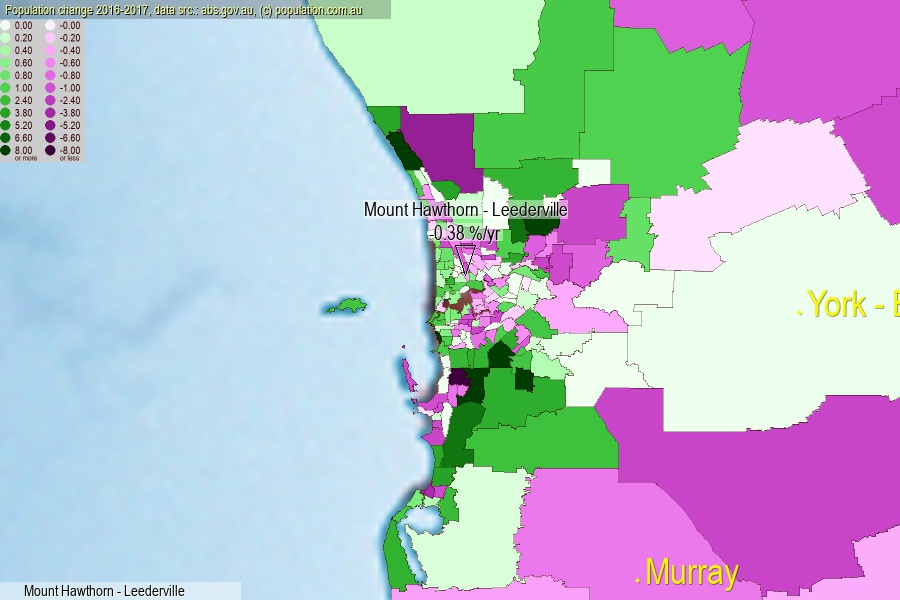 population.com.au
population.com.auLast official estimated population of Mount Hawthorn - Leederville (as Statistical Area Level 2) was 11 211 people (on 2017-06-30)[2]. This was 0.05% of total Australian population and 0.433% of WA population. Area of Mount Hawthorn - Leederville is 3.90 km², in this year population density was 2 874.62 p/km² . If population growth rate would be same as in period 2016-2017 (-0.38%/yr), Mount Hawthorn - Leederville population in 2025 would be 10 873. [0]



Click to enlarge. Mount Hawthorn - Leederville is located in the center of the images.
Population [people], population density [p./km²] and population change [%/year] [2]
View borders » (new window) [4]
[1991-1992] +0.25 %/Yr.
[1992-1993] -0.16 %/Yr.
[1993-1994] -0.20 %/Yr.
[1994-1995] -0.03 %/Yr.
[1995-1996] +0.56 %/Yr.
[1996-1997] +0.08 %/Yr.
[1997-1998] -0.20 %/Yr.
[1998-1999] -0.14 %/Yr.
[1999-2000] -0.21 %/Yr.
[2000-2001] +0.22 %/Yr.
[2001-2002] +1.04 %/Yr.
[2002-2003] +2.42 %/Yr.
[2003-2004] +1.26 %/Yr.
[2004-2005] +1.13 %/Yr.
[2005-2006] +1.71 %/Yr.
[2006-2007] +1.88 %/Yr.
[2007-2008] +1.33 %/Yr.
[2008-2009] +3.57 %/Yr.
[2009-2010] +1.77 %/Yr.
[2010-2011] +2.45 %/Yr.
[2011-2012] +1.33 %/Yr.
[2012-2013] +0.96 %/Yr.
[2013-2014] +0.38 %/Yr.
[2014-2015] +0.31 %/Yr.
[2015-2016] -0.05 %/Yr.
[2016-2017] -0.38 %/Yr.
[0] Calculated with linear interpolation from officially estimated population
[1] Read more about SA2 and Australian Statistical Geography Standard (ASGS) on abs.gov.au
[2] Population data from Australian Bureau of Statistics (Population and density: 2017; change: 2016-2017)
[3] Digital Boundaries: Australian Statistical Geography Standard (ASGS) 2016.
[4] Border coordinates are simplifyed using Ramer-Douglas-Peucker algorithm.